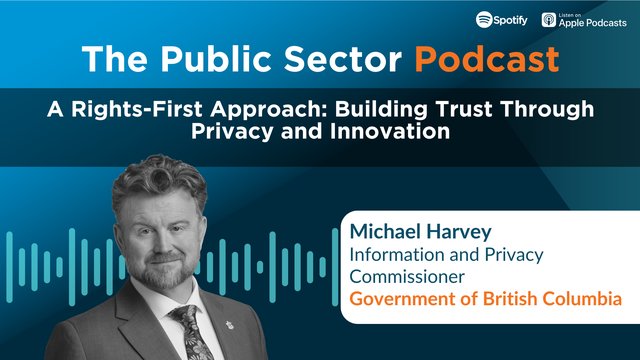The current Covid-19 crisis has strained us all in ways we could have never anticipated. For certain sectors revenue streams have all but dried up, for healthcare and logistics; demand has been higher than ever, and for the average joe, well we’ve all just experienced the need to ration loo roll and duel it out over a packet of spaghetti.
For the public sector though – those departments and agencies tasked with supporting citizens day in and day out we’ve seen increased reliance on government services like MyGov with hundreds of thousands unemployed and others needing additional support and information. Due to isolation requirements digital services have been the hardest hit.
While governments across the board have been steadily working towards developing improved digital citizen services, the crisis has served to emphasise how crucial this is.
DevOps, literally a condensed version of two terms: development and operations, has recently emerged as a solution to overcome the challenges of operating traditional models, by enhancing opportunities to enable faster digital transformation; which is exactly what most are striving for in the current climate.
While some public sector departments and agencies across Australia and New Zealand have already transformed, integrating a DevOps culture into BAU, for most it remains an abstract term – something you made a note on your phone to google at a later date and promptly forgot about.
DevOps however offers a number of opportunities and benefits in the public sector. Read on below for your abbreviated DevOps in the Public Sector Guide to explore:
- What DevOps is
- Case Study snapshots of DevOps in action
to drive IT process efficiencies, increase productivity and service delivery, reduce system maintenance time and ultimately, deliver those experiences that citizens have come to expect – which is why the prevalence of the technical practice is quickly rising.
What is DevOps?
A contraction of Development and Operations, DevOps is a technical IT process that changes culture between teams and focuses on rapid IT service delivery through the adoption of agile and lean practices in the context of a system-oriented approach.
“Cool,” I hear you say. “But what does it actually mean?”
Essentially DevOps works to breakdown silos between your Development teams – those that create codes for services and applications and those that deploy those codes; your Operations team. This is crucial.
According to Deloitte, “IT is expected to deliver projects [through DevOps] 4x faster and with the same budget.”
For decades these teams have worked independently meaning Developers lacked a clear view of how Operations will use the service with products created not standing the test of real-world deployment. The new service can disrupt existing workflows, compromise security, lead to cost blowouts and delivery delays or even fail regulatory requirements because developers didn’t have enough information during development.
Iterative, DevOps-led projects with rapid development and short feedback cycles allows the public sector to increase performance many times over and deliver better services faster.
DevOps in Action
To better understand the benefits of DevOps we’ve compiled two public sector cases studies from Transport for NSW and the Department of Local Government, Sport and Cultural Industries Western Australia to explore the transformative ability of strategically integrated DevOps.
Transport for NSW
WHO: Sydney’s transport network has served the city and surrounding regions for more than a hundred years. Over that time, systems have become outdated and management and maintenance of the network – which includes rail, light rail, metro, ferries and buses, has grown incredibly complex.
WHY: The network is also carrying more people than ever. Looking at the rail network – by far the busiest – it took 160 years for the railway to reach 300 million journeys annually and just five years for that total to reach 404 million. That’s a 30 per cent increase in annual journeys since 2013. Demand, despite the current Covid hiccup, is only projected to grow.
HOW: Looking to better understand passenger behaviours, harness big data and deliver better customer experiences TfNSW partnered with solution providers to develop an Opal analytics platform using cloud-native tooling. Underpinning the whole process was a DevOps culture and methodology.
RESULTS:
The new platform ingests data feeds from Opal card readers near real-time while aggregating additional data sources to provide insights on passenger capacity, flow and possible interruptions. This has worked to minimise the operational and management requirements of the platform while reducing cost.
Department of Local Government, Sport and Cultural Industries, WA
The Western Australia Department of Local Government, Sport and Cultural Industries
WHO: The Department of Local Government, Sport and Cultural Industries (formerly The Department of Local Government and Communities) has been progressively adopting agile software development methods while increasing the use of DevOps tools and processes across ICT.
WHY: As an early adopter back in 2015 the department has enjoyed a number of success from the integration and maturing DevOps processes with the primary success coming in the development of the MyCouncil website – a central repository to access and compare information about Western Australia’s local governments.
HOW: The website is among a number of ways the State Government is helping to build the capacity of local governments and strengthen their accountability and performance and was developed through a disciplined cultural transition towards an agile and DevOps operating methodology.
RESULTS: The department’s strategic decision to transition to agile software development and DevOps has not only increased productivity, but has seen a reduction in risks associated with software development and release management. The product results in ICT having end to end traceability for work items, including the ability to see at a glance what changes have been deployed to what environment.
Be sure to check out the next post in our QuickStart guide to explore DevOps opportunities, challenges and implementation top tips.




































